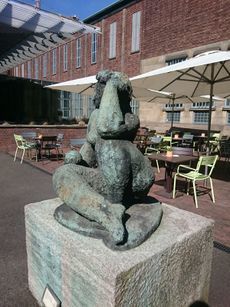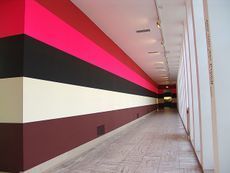Difference between revisions of "User:Fuutsie"
| Line 11: | Line 11: | ||
The day the god Fortuna, god of fortune, fate and fertility leaves and makes place for Anteros, god of love and passion, women prepared a festive meal to celebrate the occasion. This day is often referred to as “giorno di riposo”, Literally translated to “Day of rest”. Where usually the locals of Acri (south of Italy) wore fabulous clothing to praise the gods, Anteros was praised by a day of openness and freedom. | The day the god Fortuna, god of fortune, fate and fertility leaves and makes place for Anteros, god of love and passion, women prepared a festive meal to celebrate the occasion. This day is often referred to as “giorno di riposo”, Literally translated to “Day of rest”. Where usually the locals of Acri (south of Italy) wore fabulous clothing to praise the gods, Anteros was praised by a day of openness and freedom. | ||
| − | Since this day was not pinned by a specific date but determined by the harvest of tomatoes it was commonly associated by the refreshing of the soil. To prevent staining the soil with | + | Since this day was not pinned by a specific date but determined by the harvest of tomatoes it was commonly associated by the refreshing of the soil. To prevent staining the soil with “unnatural” clothing, women and children were not allowed to wear clothes on the fields. |
The end of the harvest was celebrated by a grand meal. Pasto Prandi (Meal of rest) was a dish where green tomatoes were peeled and boiled with spices, and wine. | The end of the harvest was celebrated by a grand meal. Pasto Prandi (Meal of rest) was a dish where green tomatoes were peeled and boiled with spices, and wine. | ||
| − | This statue is a snapshot of a woman peeling tomatoes in preparation of pasto prandi. | + | This statue is a snapshot of a woman peeling tomatoes in preparation of pasto prandi. It is thought that this was originally made by an artist in Cosenza. Later was found out it was |
|} | |} | ||
Revision as of 14:13, 25 April 2018
Hoe noem je een fuut die onder water duikt...
| Contrafactual Past |
An italian woman preparing dinner on a hot day.The day the god Fortuna, god of fortune, fate and fertility leaves and makes place for Anteros, god of love and passion, women prepared a festive meal to celebrate the occasion. This day is often referred to as “giorno di riposo”, Literally translated to “Day of rest”. Where usually the locals of Acri (south of Italy) wore fabulous clothing to praise the gods, Anteros was praised by a day of openness and freedom. Since this day was not pinned by a specific date but determined by the harvest of tomatoes it was commonly associated by the refreshing of the soil. To prevent staining the soil with “unnatural” clothing, women and children were not allowed to wear clothes on the fields. The end of the harvest was celebrated by a grand meal. Pasto Prandi (Meal of rest) was a dish where green tomatoes were peeled and boiled with spices, and wine. This statue is a snapshot of a woman peeling tomatoes in preparation of pasto prandi. It is thought that this was originally made by an artist in Cosenza. Later was found out it was |
| Speculative Future |
Visualization of code example 2aLines, perspective, all things that we have to consider while programming the virtual world. To keep not only the mind, but also the physical human in contact with the program we make an artificial stage, where the tactile connection correlates with the mental image of the program. [VR Crossdimension] Combining these parameters makes us able to guide people the right way and happy in their Lifepod: Giving them the feeling of mobility.
Keep in mind to strictly use our code as the person will feel confused and/or become aware of the simulation. When this happens serious actions will be taken to prevent this event recurring, and thus disqualifying the responsibles from their position. |

